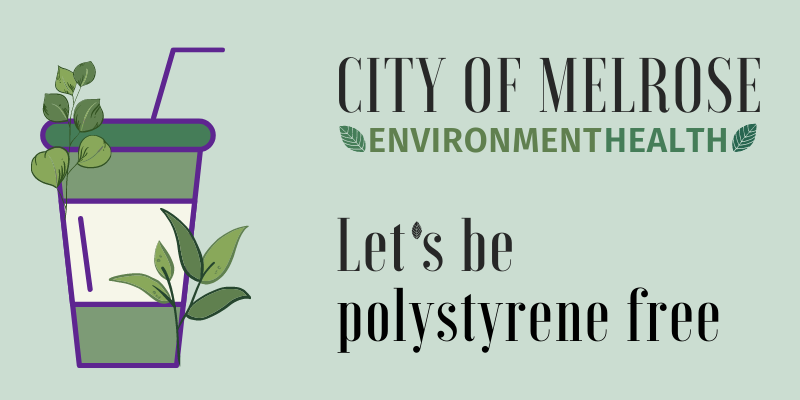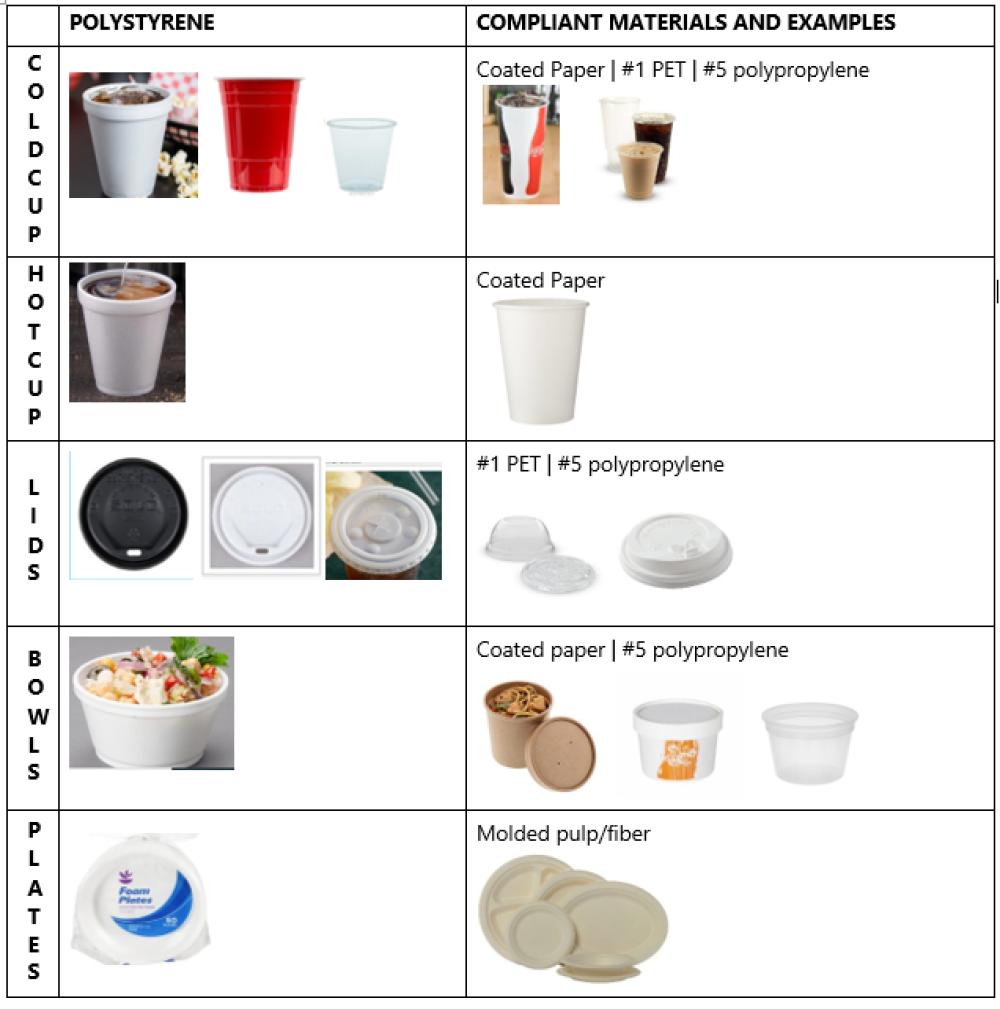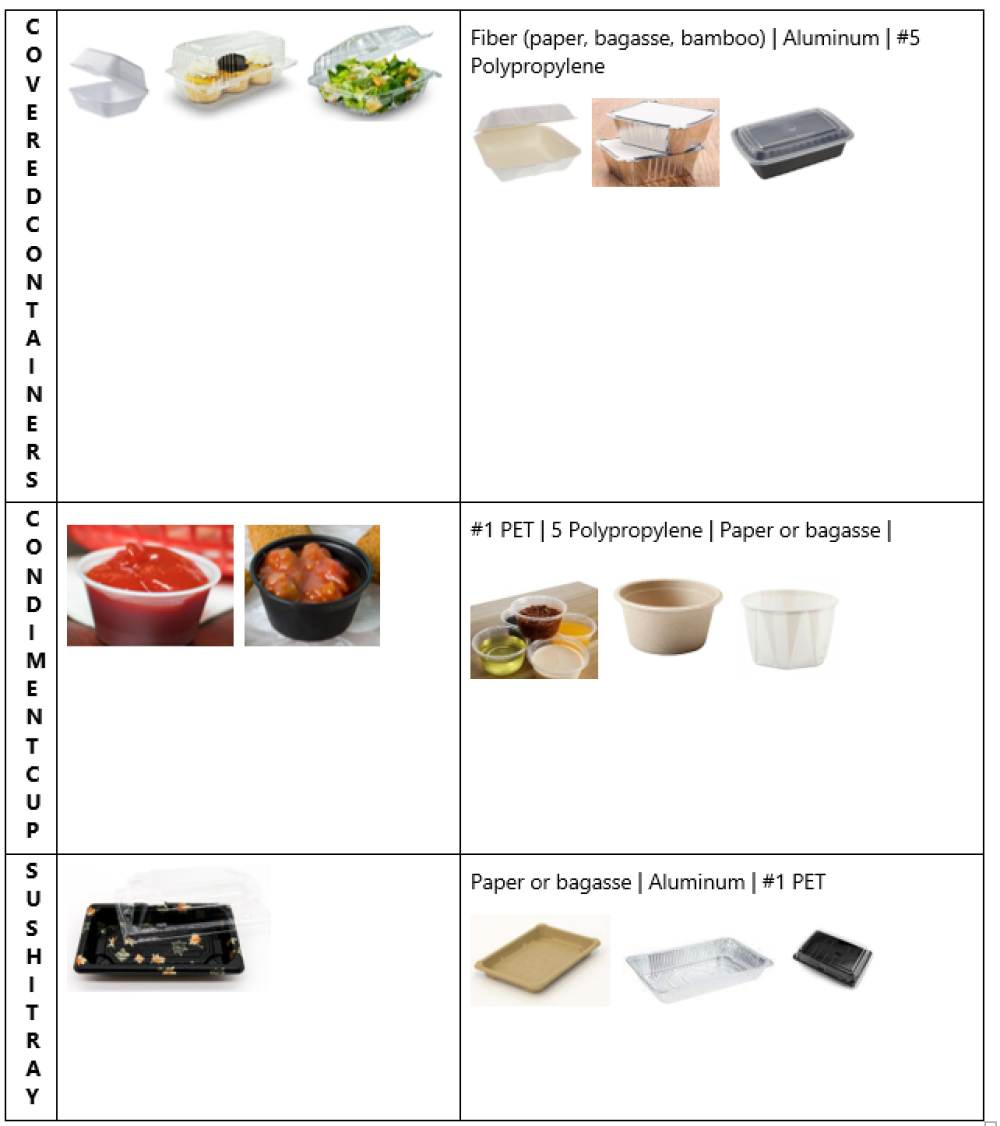Polystyrene Ordinance FAQs


The Melrose City Council passed a polystyrene ordinance because polystyrene poses problems to public health and the environment. Polystyrene contains a small percentage of residual styrene, a neurotoxin and probable carcinogen, a substance capable of causing cancer in living tissue. Please continue reading to get answers to the most frequently asked questions when it comes to the City of Melrose Sustainable Food and Packaging Ordinance.
Melrose encourages all businesses and residents to consume fewer disposables and use more reusable containers whenever possible. The City faces rising costs for recycling and trash, streets and parks are littered with single-use containers, and we need to reduce green-house gas emissions.
Contact the Melrose Health Department to determine if your business needs to comply at (781) 979-4130. Visit www.zerowastemelrose.org/polystyrene-ban for additional information.
When does the Sustainable Food Containers and Packaging ordinance take effect?
Beginning January 2022, foam and rigid polystyrene will be banned as food and beverage packaging in Melrose in the largest retailers. On July 1, 2022, the law will take effect across all retailers in Melrose.
- For establishments over 8,000 square feet, the ordinance takes effect January 1, 2022.
- For establishments under 8,000 square feet, the ordinance takes effect July 1, 2022.
Who needs to comply with this ordinance?
- Business owners who sell food and beverage.
- Any business or government establishment that stores, prepares, packages, serves, vends, or otherwise provides food for human consumption.
- Business owners who sell packing material.
- The new law applies to businesses that sell or distribute polystyrene foam or rigid packing material.Foam packing peanuts are an example of polystyrene packing material.
- Businesses who offer food and beverages offered at City events
- Such as the Victorian Fair, Healthy Melrose, Melrose Farmers Market, and similar events.
How do businesses comply with the polystyrene ordinance?
Eliminate polystyrene food and beverage containers from your establishment.
- Identify which containers are polystyrene.
- Look for opportunities to reduce disposable containers altogether (by using less packaging or switching to reusables).
- Replace with a non-polystyrene material.
How can you determine if a food or beverage container is made of polystyrene?
Look for the following symbols and markers on the container itself and in the product description. When in doubt, check with your supplier.
| PS-6 | PS | OPS | EPS |
What is polystyrene?
- Polystyrene is a type of plastic. It comes in foam (expanded polystyrene, commonly known as Styrofoam®) and rigid forms (also called oriented or extruded polystyrene).
- When heated, styrene leaches out of polystyrene.
- Making polystyrene involves other highly toxic materials such as benzene.
- Polystyrene does not biodegrade and breaks into micro particles that persist in the environment and enter the food chain.
- It is not accepted in curbside recycling in most cities nationally because it is difficult/costly to recycle. Polystyrene foam was the 2nd most common litter type in Ocean Conservancy’s 2018 beach clean-ups.
- More than 40 municipalities in Massachusetts now ban polystyrene.
Are there any exemptions to the ordinance?
- Yes. The ban applies only to containers that the business uses to package food/beverages on its premises.
- Pre-packaged food/beverage products are excluded from the ban.
- For example, a supermarket may purchase from a distributor pre-packaged meat on a foam tray, but the store cannot use foam trays to package meat butchered at the store.
Where can acceptable alternatives be purchased?
Inform your regular vendors you require containers that are not polystyrene. Confirm the material before you purchase. Vendors and distributors that sell non-polystyrene containers include, but are not limited to: Be Green Packaging; BioMass Packaging; Dart; EBP Supply; Eco Products; Fabri-Kal; Greenware; Hubert; Pactiv; TriMark; United East; Vegware; WB Mason; and WebRestaurantStore.com, among others.
Examples of Polystyrene VS Compliant Materials


How can this ordinance help reduce the packaging/containers used by a business?
Is your business throwing money in the trash, in the form of disposable containers? Use these 3 strategies to reduce cost or be more sustainable.
- Eliminate excess packaging and single-use items.Instead of a plastic container, consider Kraft paper or foil wrappers instead. Experiment to see what works for you and your customer.
- Reduce the amount of disposables that you give away.
- Serve the item only on request.
- Ask the customer if they need it, instead of automatically giving out an item.
- Use only what is needed, when it’s needed for the right number of people. For example, provide cutlery for the number of people and type of food ordered – soup doesn’t need a knife. Serve lids only for kids.
- Use self-serve dispensers that release only one item at a time. These encourage customers to take only what they need, instead of grabbing a handful.
- On or near dispensers, remind customers to “Consider the environment. Take only what you need.”
- Use signs or talk to your customers about your efforts to use less disposable packaging, and how they can help.
- Customers increasingly do not want unnecessary disposable packaging and try to reduce waste in their lives. They get frustrated if a business gives them wasteful packaging.
- Customers recognize that disposable packaging contributes to litter.
- Post signs such as
- “Reduce waste and litter. Take only what you need.”
- “We’ve switched to reusables to reduce waste.”
- Replace disposables with reusable options.
- Replace disposable items with glass, ceramic, stainless steel, wood, or durable plastic versions.
- Encourage customers to bring their own reusable items. Offer a discount or size upgrade for customers who bring their own mug/cup.
- Make it clear that customers can bring their personal containers to take home leftovers (as long as the container doesn’t enter your food prep area).
*The Product Stewardship Institute offers an online guide and tool to understand and reduce your plastic usage.

